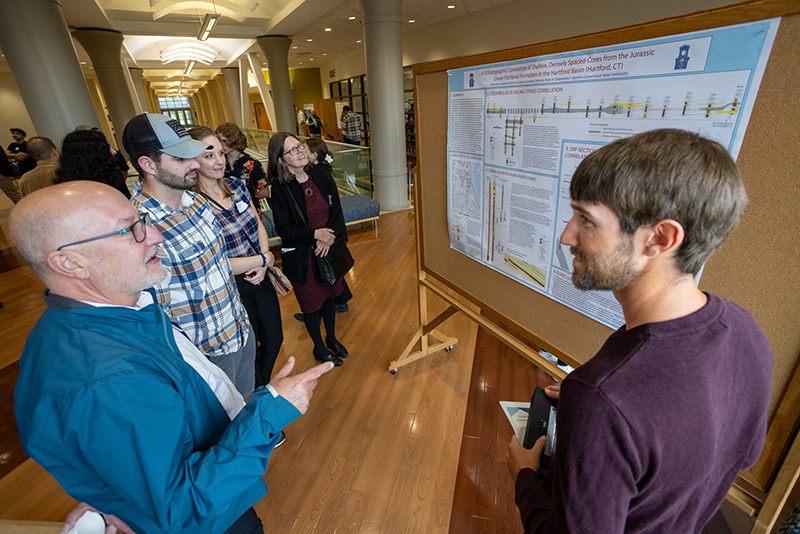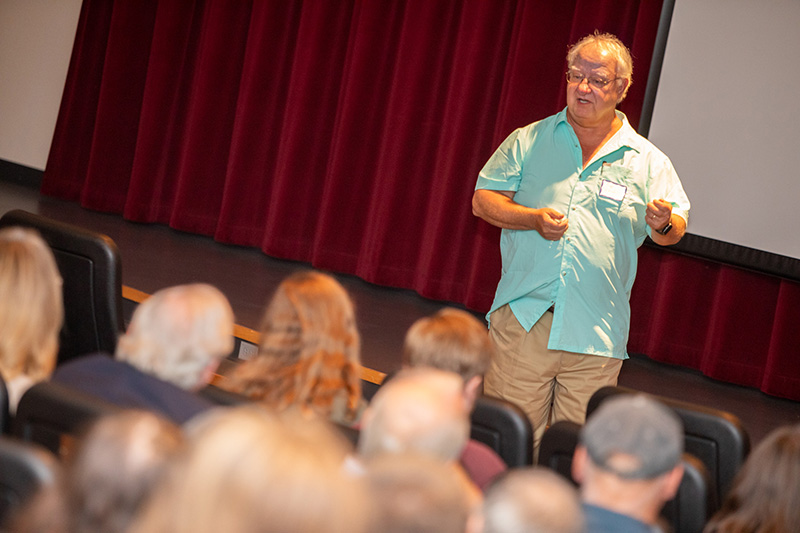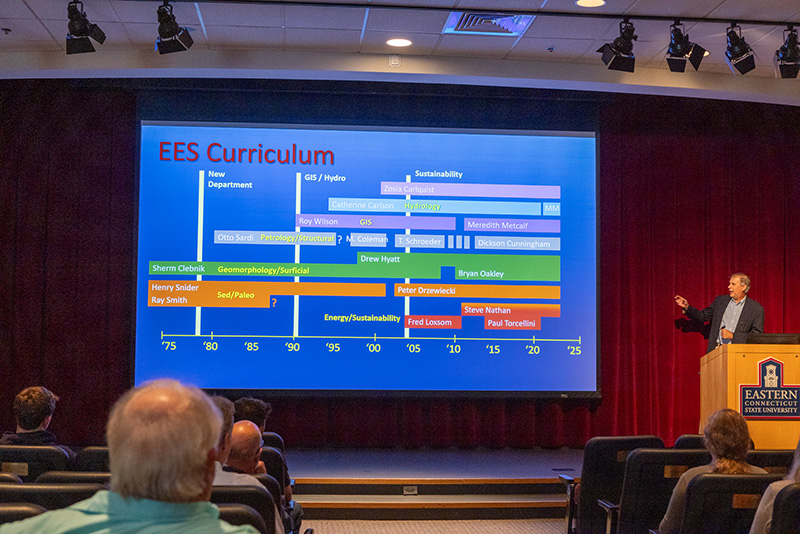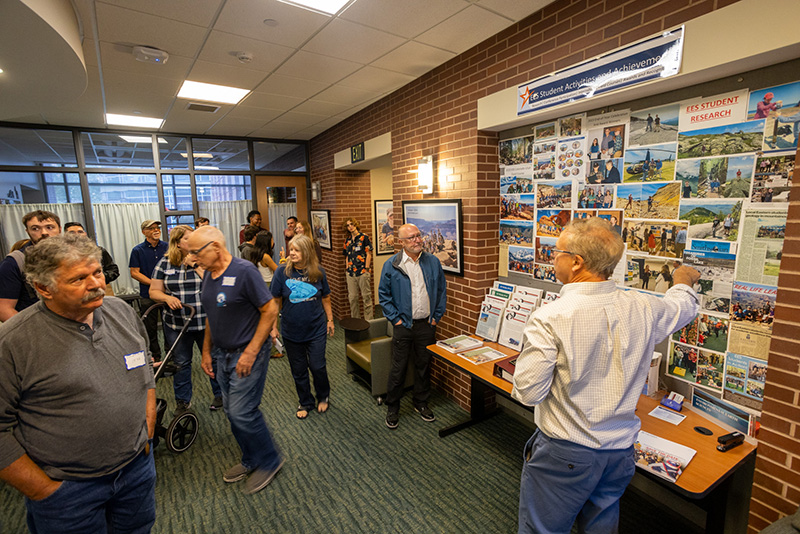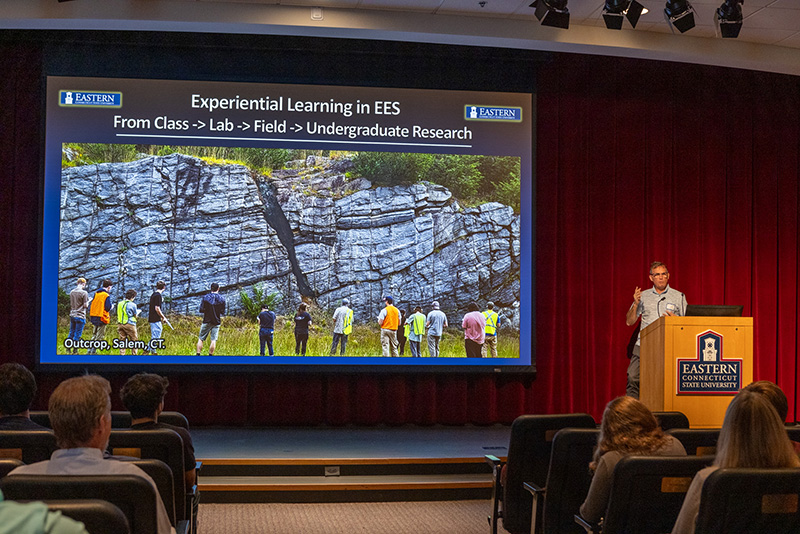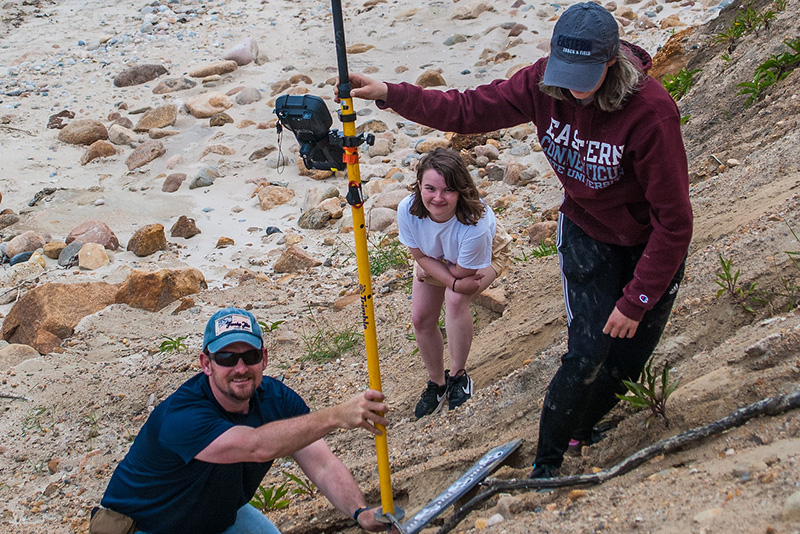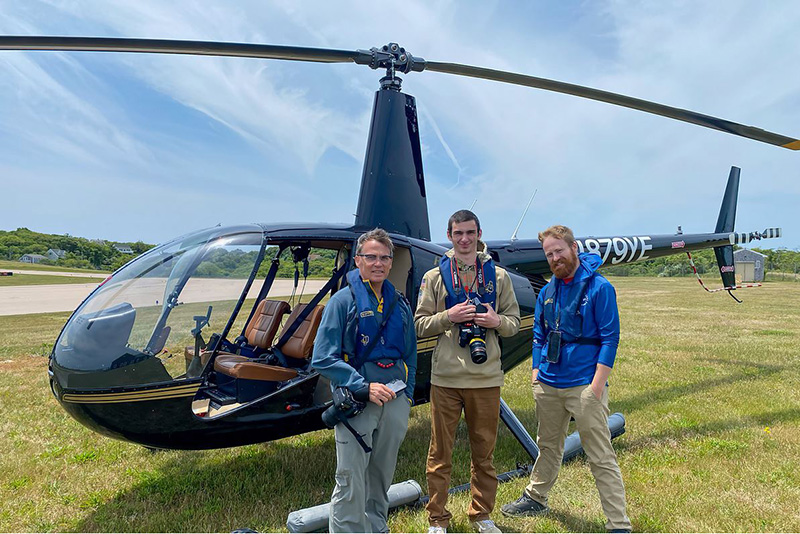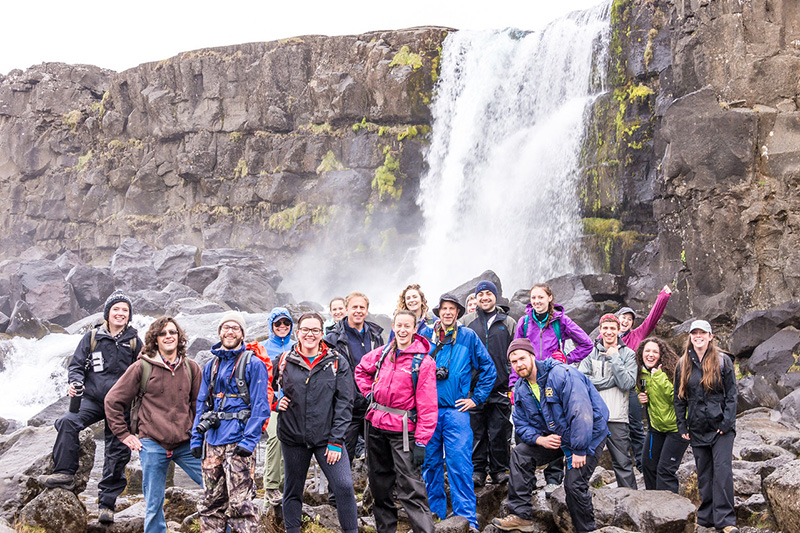- Apply
- Visit
- Request Info
- Give
Eastern's earth science community celebrates 50 years of EES
Written by Marcus Grant
Published on October 10, 2023
The Department of Environmental Earth Science (EES) celebrated its 50th year at Eastern Connecticut State University on Oct. 8 by bringing alumni -- some from the earliest days of the major -- to meet with faculty, current students and other members of the EES family.
The event opened with a gathering for alumni and current students in the Student Center Café. Some caught up with old friends and colleagues, bringing undergraduates into the conversation and offering words of advice and encouragement. All shared information about their research. Everyone attending was more than happy to engage with others, making the department’s sense of community palpable.
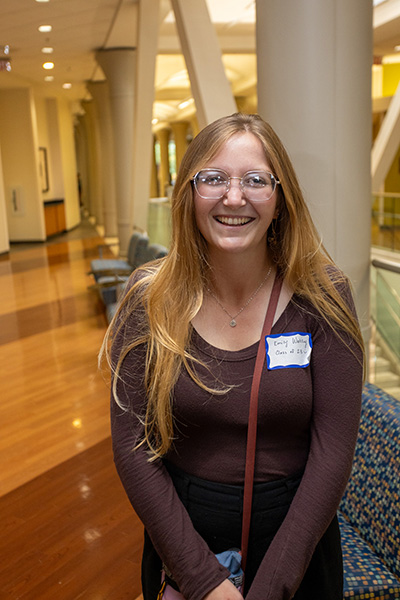
Recent graduate Emily Watling ’23 came to reconnect with friends and meet those who graduated from the department before her. Watling said, “It’s inspiring to hear the stories of what everyone has done with the degree that we have.”
Professor and Department Chair Bryan Oakley said the goal was to describe “where we were, where we are, and where we’re going.”
The department was created in 1973 by professors Sherm Clebnik, Henry Snider and Ray Smith, and has since blossomed, graduating more than 800 students who now work in 40 states outside Connecticut and eight countries beyond the United States.
Tim White ’81, nephew of EES department founder Ray Smith, described his experience coming to Eastern after joining his uncle on studies as a kid. “To be able to have the context to explain what I saw just drew me in. It changed my life.” He spoke about his experience working at the Yale Peabody Museum.
“Before I knew it, I was flying in a plane with thousands of artifacts. You never know what you’re going to get in this field,” he said. “Just enjoy it.”
Professor Dickson Cunningham said, “It’s almost emotional, it’s so joyous. There are so many points of pride within the department.”
Also present was Professor Peter Drzewiecki, who explained the evolution of the curriculum, which has developed new concentrations over the past five decades, culminating currently in environmental science, general earth science, sustainable energy science and environmental earth science.
“This department is not still,” Drzewiecki said. “We keep up with both the demands of the workforce and the interests of students.”
“When I came to Eastern and met with (professor) Cunningham, not only was it ‘what are you good at’ but ‘what do you want to dedicate your life to,’” said senior Nick Peteros ’24.
Professor Drew Hyatt highlighted the many ways students engage with EES research. They are able to work at local sites and outside the classroom on campus, using tools and building new techniques, all allowing them to learn through their experiences.
“There’s nothing better than getting out in the field and solving a problem,” said Hyatt.
Pete Wilson ’76 was among the first to graduate from the program. He reminisced about the field learning he did as an undergraduate. “In June of 1975, I went on a field trip with Dr. Smith. We began in Connecticut and made it all the way to Vermont. We went into coal mines and granite quarries. We even found fossils, not like in a museum, but in the ground,” said Wilson. “We kept going till we were sick of the rain.”
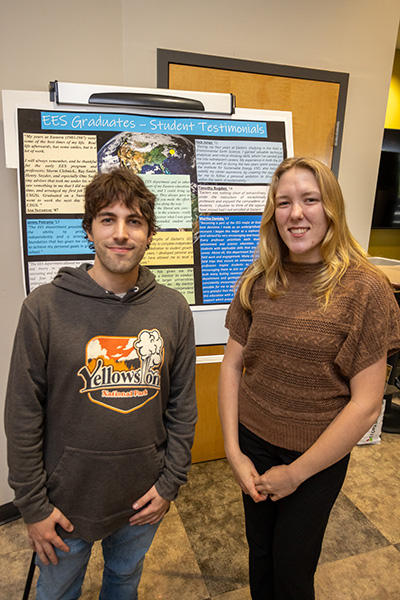
Students also regularly attend research conferences and publish their work, demonstrating their ability to communicate both problems and solutions clearly to others.
Alumni and current students alike share a sense of pride and community in their field.Greg Johnson ’78 said that when he came to Eastern, he had planned to transfer to the University of Connecticut but decided not to. “My friends elsewhere were just one of a few hundred. I knew my professors by name,” he said. “They cared about me and my success.”
Penny Tracy ’76 said, “It was a community. I actually took care of Snider’s mother-in-law just before she passed.”
“For me the highlight was hearing from the alumni and some current students about their time as students, and where their careers have gone since leaving Eastern,” Oakley said. "This went on for an hour as alumni reminisced and reflected. It was so wonderful to hear all these stories. While the faculty love to hear these successes, our current students in attendance got an opportunity to hear how their degree is valued and examples of where that can take them in the future."
Oakley continued, “One of the things that hasn’t changed (about EES) is the sense of community. We get to know the students and they know us. There’s a community that gets built in the classroom. That’s something I think we always foster."
“It’s so moving to hear what the program was,” said junior Genevieve Rondeau. “I feel at home here. It’s a wonderful feeling to have a family to lean on here at school. What we do at Eastern really does carry on in the future.”



